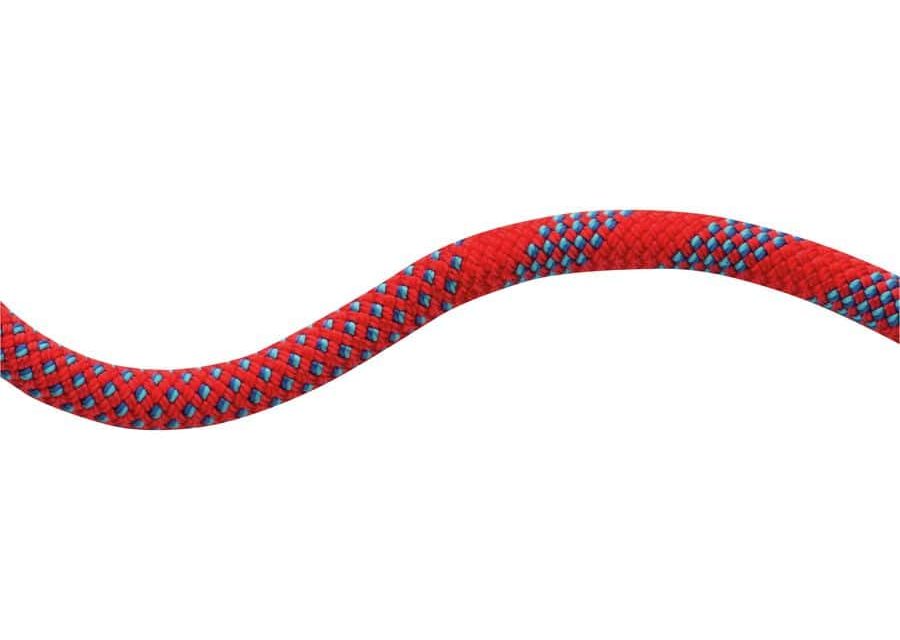For 2015 Mammut has introduced a new line of ropes with some pretty standard-setting dry technology. After six months of testing the Eternity Dry Duodess 9.8mm, I’ve been really happy with its performance, even surprised. This rope has surpassed my expectations for durability, and just as impressive, it has remained grime-free.
In fact, I can confidently say that the Mammut Eternity Dry Duodess 9.8mm has stayed cleaner longer than any rope I’ve used—dry or otherwise.
Typically, rope companies will add a silicon-based, water-repellent coating to the sheath/exterior of their rope, and call this a “dry rope.” The reasons to own a dry rope are myriad. First, the UIAA conducted a test that showed that a fully soaked (brand-new) rope will lose upwards of 30% of its strength. Seventy percent strength is still more than enough to keep you safe in most climbing situations, but if your rope is older and has some core damage, AND it’s wet, then that’s potentially a really bad situation.
Dry treatments are clearly mandatory for ice and alpine climbers, where persistently wet conditions are considered part of the “fun.”
Most rock climbers, though, tend not to climb in the rain or in wet conditions. Therefore, these climbers will insist that they don’t need dry ropes, which makes sense. Rope companies, of course, will insist that all climbers would benefit from spending an extra $30 to $50 to upgrade to premium dry ropes, because the dry treatment, they say, protects the rope against dirt and grime.
In my experience, this is often not true. Some dry treatments have prolonged my rope’s life, but most of them have done nothing more than make my rope extremely dirty and grimy, which ultimately contributes to more wear. Further, I’ve often felt like dry treatments wear off after either a few months, or your first rope wash.
So my advice has always been, unless you’re an ice climber or alpinist, save your money and opt for a non-dry rope.
Mammut has changed this opinion.
Mammut’s new dry technology is unique because both the sheath AND the individual strands of the core are given a dry treatment.
Mammut’s new dry technology is unique because both the sheath AND the individual strands of the core are given a dry treatment. Mammut claims that treating the core strands reduces friction between the individual fibers, and therefore improves longevity of the rope. Also, it absorbs much less water than other ropes, and therefore remains much stronger even when it’s wet.
I’ve definitely noted an improved durability with the Eternity rope, though it’s nothing miraculous. I’ve only had to trim one end after six months of wear, whereas I might expect to have trimmed another rope at least two times by now. But the thing that I’ve enjoyed most is how clean, and grime-free, this rope has stayed, which I can only assume is thanks to the unique dry treatment.
My one complaint with the Eternity is its weight. At 64 g/m, the Eternity Dry Duodess 9.8mm is quite heavy—and I really feel it when I’m climbing. For comparison, the Petzl 9.8mm is 63 g/m, while the Sterling Evolution Velocity 9.8mm is only 62 g/m.
In the future, I’m looking forward to testing one of Mammut’s skinnier dry ropes to see whether this claimed durability from the dry treatment carries over when the rope gets skinnier. But until then, I’m stoked on this big, beefy projecting cord that is nice and grime-free.




Recent Comments